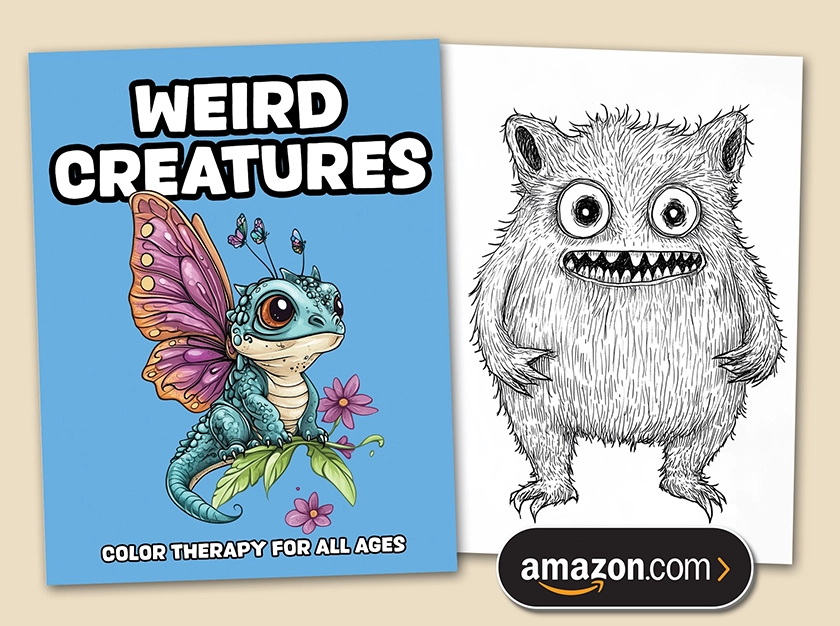Most people assume a fenced-in yard is all they need to keep their dog safe. But dogs experience the backyard differently than we do. They tune into scents, textures, and tastes that mean a truly safe yard demands a rethink on how we use and store common items.
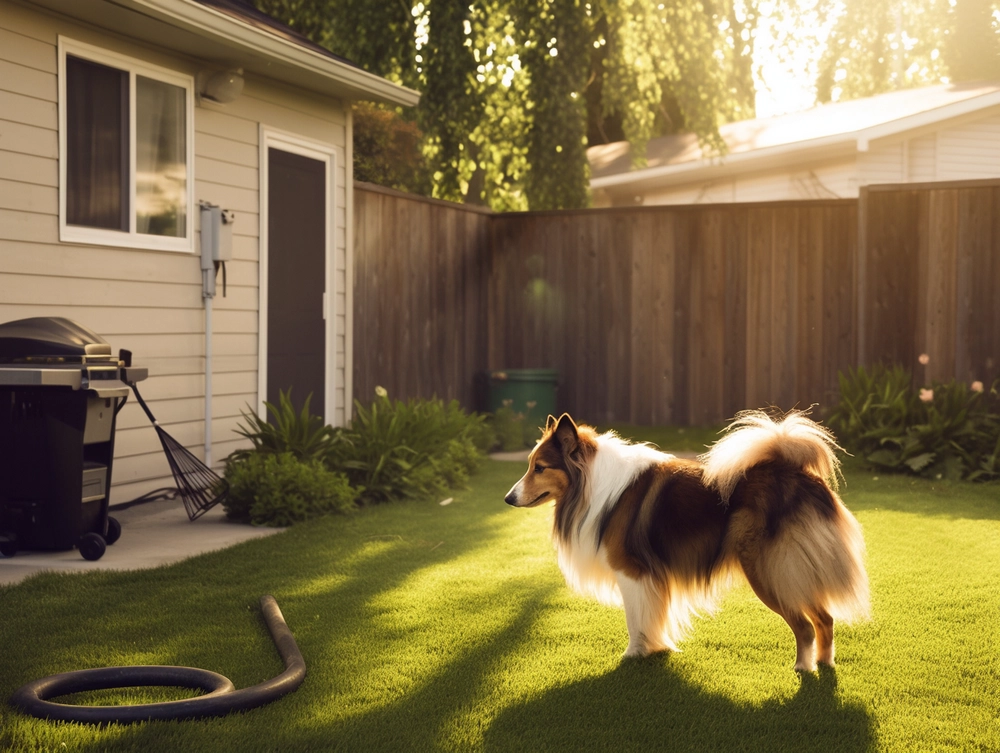
The backyard harbors many dog hazards in plain sight.
1. The Dangers In (and Out) of Sight
If you walk through your yard right now, you'll likely find several things that aren't safe for your dog to chew on. A garden hose. A power tool extension cord. A metal rake leaning against the shed. For puppies and younger dogs especially, these everyday items look like irresistible chew toys that can lead to serious injury.
Now imagine your Sheltie gets the zoomies. Heavy tools can be nudged or pulled over, and hedge clippers or mowers have sharp, exposed blades. A shed door left ajar can suddenly give access to paint cans, antifreeze, and rat poison—none of which a curious dog should ever encounter.
Some hazards are harder to spot. Cocoa mulch contains theobromine and caffeine, the same toxic compounds found in chocolate. Fertilizers and weed killers cling to grass and transfer to paws or fur, only to be licked off later. Even standing water in flowerpots can become stagnant and bacteria-filled, yet seem like a refreshing drink to an unsuspecting pet.
2. Gas-Powered Tool Noise and Emissions
Gas-powered tools are loud enough to cause hearing damage at close range, and dogs have far more sensitive ears than humans. If your dog bolts when the mower starts, he's not being dramatic: he's reacting to more than 90 decibels of continuous noise. On top of that, gas mowers release carbon monoxide at your dog's nose level. So even if your dog isn't bothered by the sound, he may be following you around the yard and inhaling toxic fumes.
Switching to an electric mower cuts the noise roughly in half and eliminates fumes entirely. Your dog will stay calmer and be less likely to dart through your workspace or attempt an escape. Quieter tools also make it easier for you to keep an eye on your dog while you work, helping both of you enjoy more relaxed time outdoors.
3. Lawn Treatments and Parasites
Homeowners work hard to keep their grass thick and green. But not all lawn treatments are safe for pets, even after it dries. Many fertilizers leave chemical residues that cling to grass blades and soil, where pets walk, roll, and sniff. Dogs pick these up on their paws and fur, which can be absorbed through the skin or ingested later while licking and grooming. Check labels carefully or choose treatments formulated specifically for homes with animals, or your picture-perfect lawn can become a source of stomach upset, skin irritation, or more serious health issues.
Grass height matters, too. Long grass hides ticks and fleas. Keep it trimmed to improve visibility of wind-blown debris and reduce hiding spots for parasites and pests. However, don't cut it too short, as uneven regrowth creates bare patches that become dig zones or make muddy holes after rain.
4. Secure Storage for Hazards
Most people sensibly store hazardous items in sheds or garages, but they must be absolutely secure. Sharp tools, toxic chemicals, and electrical devices should be stored high out of reach or behind doors that truly latch or lock. Dogs are resourceful and a slightly open door is an open invitation to explore. If you use corded equipment, beware that some dogs may be tempted to chew the wiggling prey, so keep the cord off the ground or switch to cordless tools altogether.
Just as important is what happens after you finish yard work. Tools left out "for a minute" have a way of catching a dog's attention. Put everything back where it belongs as soon as you're done to prevent accidental injuries and chemical exposures. A few extra seconds of cleanup goes a long way toward keeping your backyard truly safe for your dog.
5. Defining Their Safe Space
Animals like predictable boundaries; it helps them feel safe within their zone. If there's an area where you consistently work or store tools, make it clearly off-limits with a simple barrier, strategic planting, or steady training. The more obvious the boundary, the easier it is for your dog to respect it.
And give your Sheltie a well-defined space of her own. A dedicated dig zone, a shady resting corner, or a spot where her toys are stored all help anchor her attention and energy to those areas. When dogs have a place that clearly belongs to them, they're less tempted to intrude into your own defined areas.
6. Fighting Backyard Entropy
Creating a safe backyard isn't a one-and-done project: it needs steady attention as the environment changes. Start with regular fence checks, as dogs can dig beneath panels and slip through gaps you never noticed. Meanwhile, new hazards show up over time. Fallen branches can damage fences. Wood warps and settles. Gate latches become loose. Hinges rust and fail.
Plants and equipment also change over time in ways that affect safety. A harmless young shrub may produce toxic berries as it matures. Mushrooms may appear after rain, with some varieties posing serious toxicity risks. Meanwhile, garden tools wear down: mower blades dull and kick up debris. Wooden handles splinter and crack. Keep an eye on these small changes and replace damaged tools before they become hazards to you and your dog.
Final Thoughts
Weave these checks into your normal backyard routine and they will become second nature. When you mow, you're already scanning the yard, so scan it with your Sheltie in mind. You may spot a new hole, a loose hinge, or a gate that doesn't quite close. When you put tools away, notice the old fertilizer bottle behind the shed or the cord that needs to be wrapped up.
A safe yard means your dog can explore outside freely while you make breakfast. He can smell nature without ingesting something harmful. And yard work isn't stressful for your dog because you're no longer filling his space with gas fumes and loud noise. Creating that peace of mind makes it worth the effort.
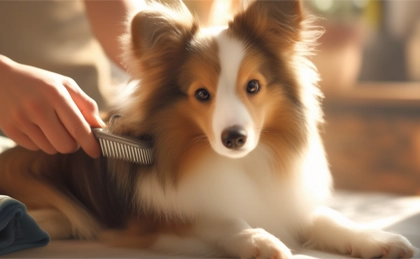
How to Groom a Sheltie
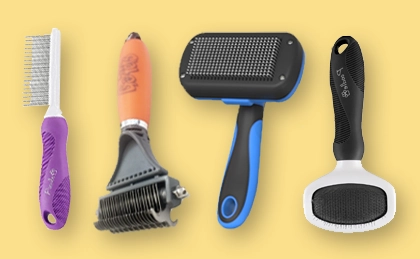
The Best Brushes for Shelties

The Best Dog Beds for Shelties

101 Sheltie Names
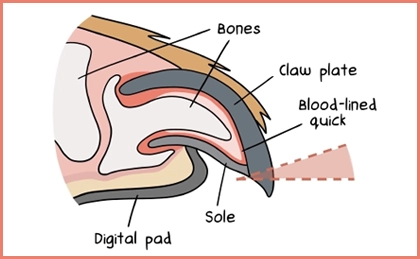
How to Trim Your Sheltie's Nails
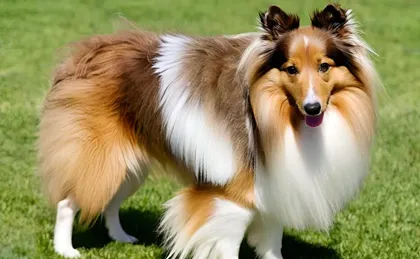
Are Shelties High Maintenance?
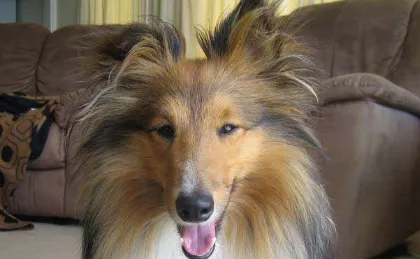
Why Do Dogs Smile?

The Sheltie Breed Standard

